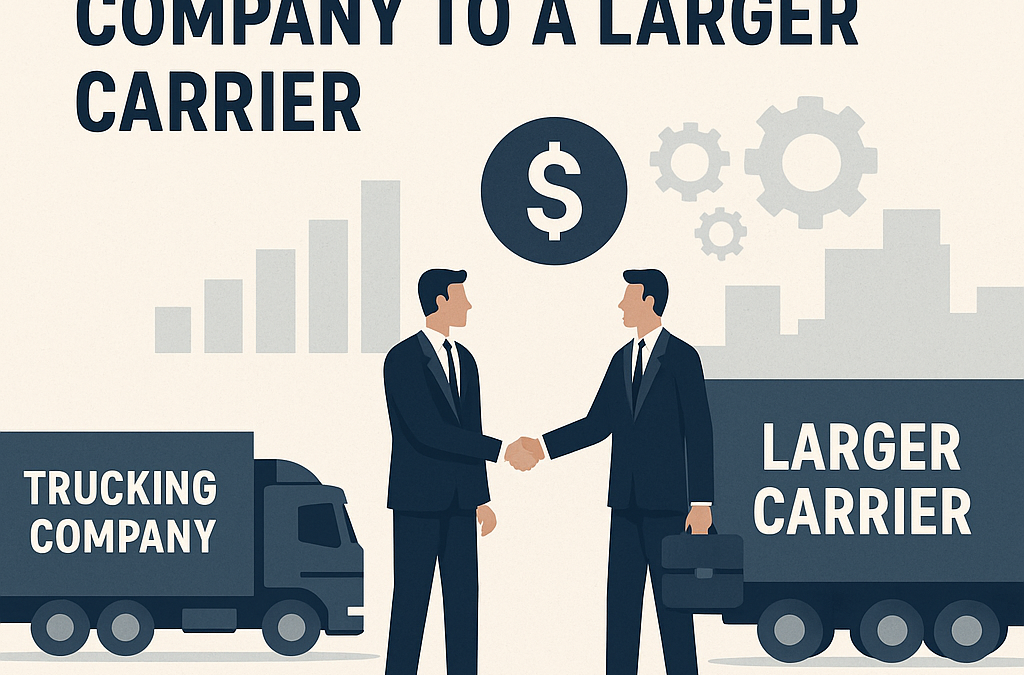Summary
In a volatile transportation market characterized by consolidation, driver shortages, and increasing compliance requirements, many small and mid-sized trucking companies face a critical decision: continue independently or sell to a larger operator. This paper examines the optimal timing for such a sale, the strategic considerations involved, and the operational systems that will typically be replaced or integrated post-acquisition. This can be supported with trucking management software. This can be backed with trucking software.
1. Market Context
- Industry consolidation trends in trucking
- Pressures from fuel costs, regulatory compliance (ELD mandates, emissions standards), and insurance rates
- The role of technology and automation in driving competitive advantage This can be supported with trucking management software. This can be supported with trucking software.
2. Strategic Reasons to Sell
- Financial Pressures
– Declining margins due to rising operating costs
– Increasing debt or limited access to capital for fleet upgrades This can be supported with trucking management software. This can be supported with trucking software. - Succession Planning
– Owner nearing retirement without clear succession plan - Growth Limitations
– Difficulty scaling due to limited driver pool, outdated technology, or lack of geographic coverage - Opportunity to Leverage Scale
– Access to larger contracts, better fuel pricing, and insurance rates via parent company
3. When is the Right Time to Sell?
- Peak Profitability Window — selling when EBITDA is strong to maximize valuation
- Before Major Capital Expenditures — e.g., required fleet replacement or compliance upgrades
- During Market Upturns — when M&A multiples are favorable
- When Strategic Synergies Exist — e.g., overlapping lanes with acquirer or complementary service offerings
4. Systems Typically Changed Post-Acquisition
| System | Typical Change | Reason for Change |
| Transportation Management System (TMS) | Migrated to acquirer’s TMS | Standardization of dispatch, load tracking, and billing |
| Fleet Maintenance Software | Integrated with parent’s system | Centralized maintenance schedules and parts procurement |
| Payroll & HR Systems | Unified under corporate HR/payroll | Compliance, benefits standardization |
| Fuel Card Programs | Shifted to larger company’s program | Better pricing and consolidated reporting |
| Safety & Compliance Tools | Migrated to parent’s ELD/telematics platform | Regulatory compliance and safety monitoring |
| Accounting & ERP Systems | Transitioned to corporate ERP | Consolidated financial reporting |
| Customer Relationship Management (CRM) | Integrated with corporate CRM | Unified sales and customer service processes |
| Reporting & Analytics Platforms | Shifted to parent’s BI tools | Consistent KPIs and performance dashboards |
5. Risks & Mitigation Strategies
– Cultural Misalignment → Conduct pre-sale integration workshops
– Technology Transition Disruption → Run parallel systems during cutover phase
– Customer Attrition → Joint communication strategy with acquirer
– Loss of Key Staff → Retention bonuses and early involvement in transition planning
6. Conclusion & Recommendations
Selling to a larger company can unlock operational efficiencies, access to capital, and long-term stability for a trucking company. However, timing is critical, and the post-sale integration process — particularly around systems and processes — must be carefully managed to avoid operational disruption. Owners should prepare at least 12–18 months in advance to maximize valuation and minimize integration risk.


Recent Comments